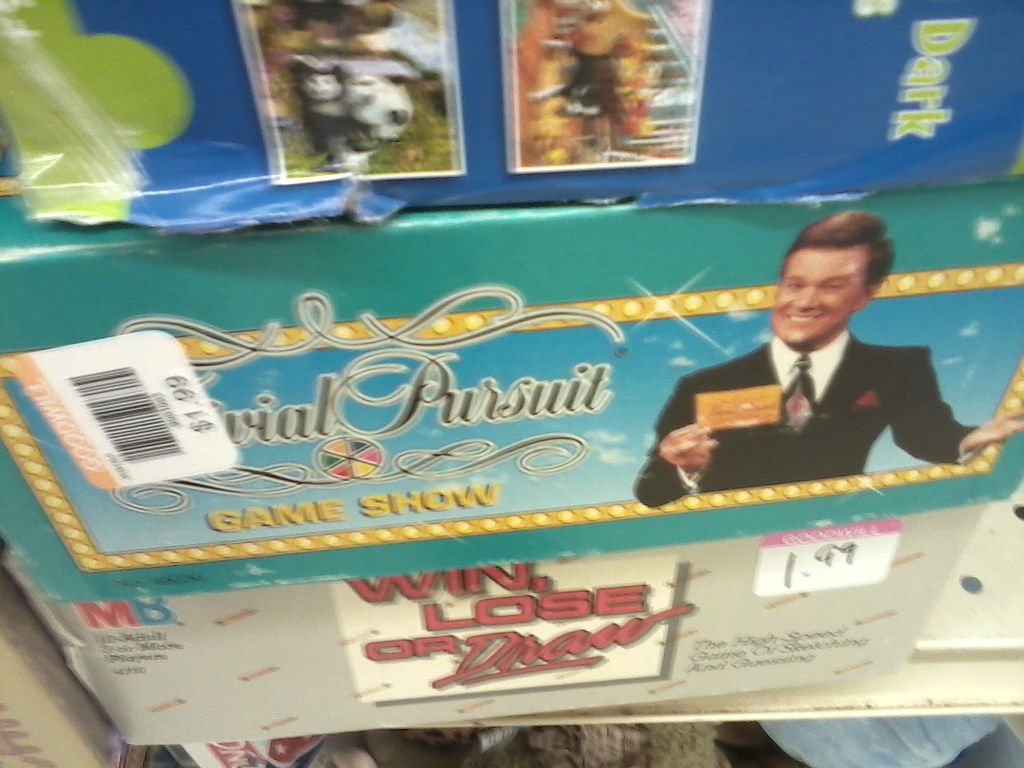
Who doesn’t love a little Trivial Pursuit fun? I bet you can’t wait to bust out a board game and test your trivia knowledge against your best friends and family members. While that’s a lot of fun, imagine not only playing your favorite game but also putting something on the line. What if you could win money and prizes for answering correctly in front of a large studio audience? That would take your wins and losses to the next level!
Does that sound familiar? Surely, you’ve heard of the Game Show Edition of Trivial Pursuit. The game promises to recreate the game show atmosphere in your living room. But that’s not Trivial Pursuit’s only foray into the game show world… did you know that Trivial Pursuit had actual game shows, and not only in North America?
In fact, many networks tried to turn the board game into a game show, with different levels of success. No show has made it through the test of time, but there is still hope! Maybe Hasbro will take on the job and finally make it work. For now, enjoy this overview of all Trivial Pursuit-inspired game shows. You can find old episodes online of those listed below if any particular show sparks your interest.
Trivial Pursuit (1986)
Trivial Pursuit in 1986 was the first attempt to make the iconic board game come to life. Daily Syndication didn’t even manage to sell the pilot, thus it was the first failed attempt. The pilot did not interest anyone, so Daily Syndication never ended up running the show. However, the premise of the show was not far from actual Trivial Pursuit.
Contestants would compete for $10,000 in cash and prizes. Much like in Trivial Pursuit board games, there were six categories and contestants were to collect six wedges. Ideally, the winner would answer all six questions correctly, collect all six wedges, and reach the hub before anyone else.
Then, the champion would answer a round of questions to secure their spot. The six wedges they would have collected would serve as lives. A wrong answer would take away one of their lives or wedges, while a correct answer would do the same to an opponent.
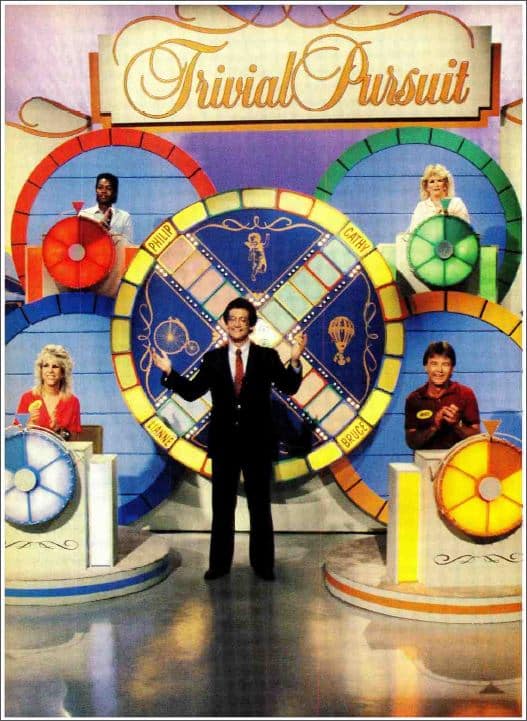
The game was meant to air in 1987. Daily Syndication had posters and advertisements prepared, but the show never made it.
Lucky Case (Счастливый Случай) (Russian Game Show) (1989-2000)
North America was not the only place for Trivial Pursuit game shows. Believe it or not, Russians (or residents of the USSR) loved their trivia too! So much so that, in 1989, the country released the most successful (read long-running) Trivial Pursuit game show.
The show was based on Trivial Pursuit board games. Two families of four were invited to compete against each other in five games. The studio featured a large game board with classic Trivial Pursuit categories. There was a special “lucky” category, which allowed players to score three points for answering one question correctly.
To spice things up, each round had a unique set of rules. The first round, for example, required the entire family to play together. In the second round, the teams had to separate, and each member answered questions individually. There was a time limit for each round to keep the game quick and add difficulty. One round even included a video question!

Eventually, Trivial Pursuit decided to release a Russian (USSR) edition of the board game around the year 1990. The quality of print was not up to the brand’s standards, so the contract was never renewed. The game show, however, was renewed in 1991, and cancelled again in 1994. This time, the broadcasting company was facing financial problems and couldn’t afford to keep the show running.
A new version of the game show ran from 1994 to 1999. This version of the show no longer featured a game board. The final version emerged briefly in the year 2000 and was canceled after only a few months. The ratings were falling, so the decision was made to cancel the game show for good. Thus ends the story of the Russian version of the game show.
Trivial Pursuit (British Game Show) (1990-1994)
The British version of the Trivial Pursuit game show came out in 1990. The show claimed to have been loosely based on the board game. It first aired on BBC1 and was then revived on The Family Channel.
The show was even less successful than its successors, so it never created a stir in the show business community, and not much is known about it to this day.
Trivial Pursuit (American Game Show) (1993-1994)
Another attempt to get the famous board game on television resulted in this Trivial Pursuit TV show that ran from 1993 to 1994 on The Family Channel. The show was based on the well-known board game of the same name. It consisted of two parts: the first half was an interactive game show and the second half was a traditional game show.
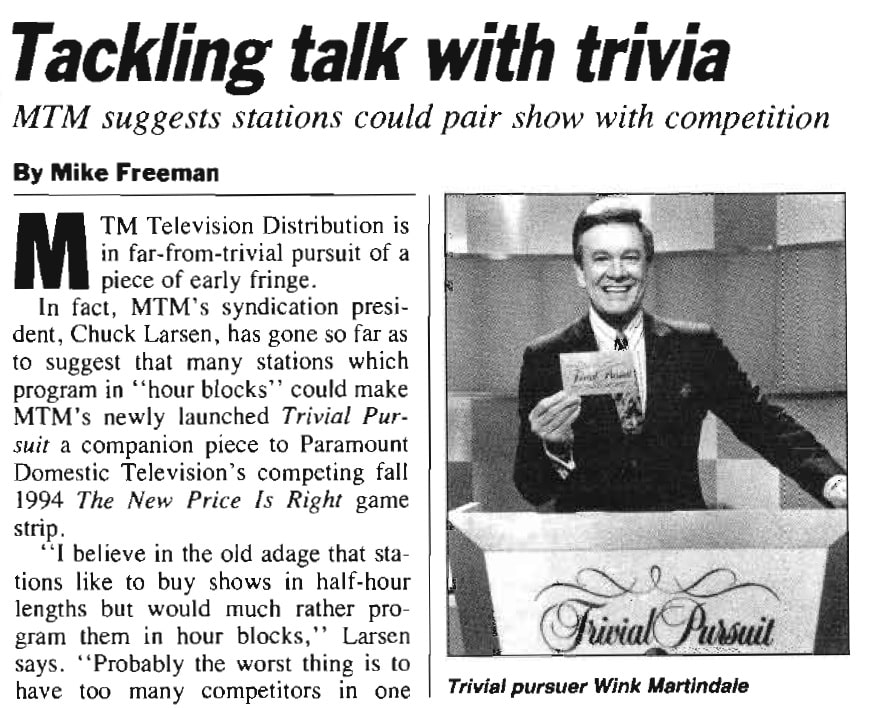
The interactive part started with nine players competing for three winning spots in the game. They had to answer five multiple-choice questions. There was a time limit of 10 seconds per question. Naturally, the faster you answered, the better. After the first round, six players with the highest scores continued into the next round. Following another set of multiple-choice questions, three players with the highest scores continued into the next round.
In the classic or traditional part of the game, the gameplay is just that, classic Trivial Pursuit. Three players race to collect the whole pie by answering trivia questions in different categories. In order to get a wedge, you need to answer two questions in one category correctly. That’s about all the resemblance with the board game there was; the show lacked a board or die.
Incorrect answers by one player granted other players a chance to steal the wedge by answering correctly. The players competed in six traditional Trivial Pursuit categories in the beginning. The second round featured categories from the Movie and Television Editions of the game.
When the final round rolled around, one player got the chance to control the game. They could complete their whole pie first, unless they got a question wrong. In that case, their opponents could steal the question from them.
If there was still time left at the end of the game, the audience got to play too! An audience member was called on stage to participate in the audience game. They were invited to answer five questions to win $100. Don’t worry, home viewers weren’t left out either! During breaks in between rounds, viewers were offered a chance to win cash and prizes by answering questions from home. The screen would show a question and a phone number to dial. If answered correctly, the winner would get a prize and a chance to go on and compete against other winners for a vacation.
The show was successful initially, so the network wanted to produce another season with over 100 episodes. Unfortunately, local stations didn’t show any interest in the show, so it was never revived.
ESPN Trivial Pursuit (2004)
ESPN Trivial Pursuit was successful in its own way, as it was just a one week special broadcasted in 2004. Two teams competed in a game of trivia. Instead of the traditional Trivial Pursuit categories, the game featured four sports categories and two pop culture categories. Each team had 45 seconds to answer six questions.
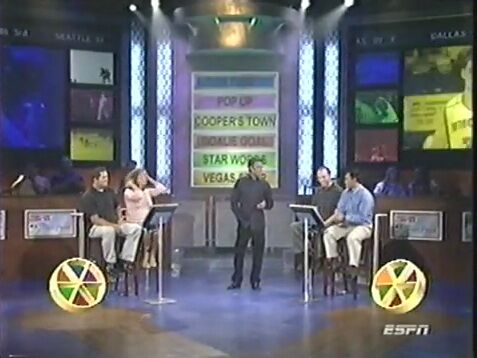
Trivial Pursuit: America Plays (2008-2009)
Trivial Pursuit: America Plays was one of the bigger television game shows inspired by the iconic board game. The show was produced in association with Hasbro, the owner of Trivial Pursuit, so viewers were expecting the game show to be exactly like the board game.
To everyone’s surprise, the ratings were very poor, much like Temptation, the show Trivial Pursuit: America Plays came to replace. The low ratings could be a result of the unique and unusual gameplay the show introduced. Instead of answering questions and competing against each other, three in-studio players competed against “America’s Team.”
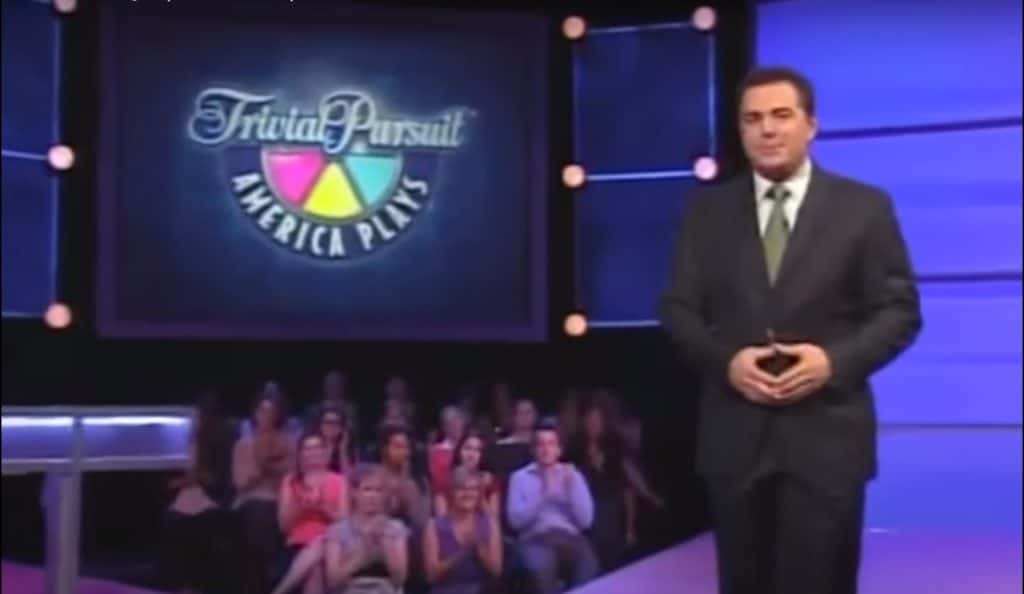
America’s Team consisted of five people that sent their submissions in on video. The in-studio players answered questions in six categories. If a question was answered correctly, the player got a wedge and money was added to the “studio bank.” If the question was answered incorrectly, the money was added to “America’s bank.” All players could answer incorrectly, in which case the sum of money in America’s bank would increase.
Much like in traditional Trivial Pursuit, categories and questions were chosen at random. The winning player faced America’s Team one-on-one in all six categories. In the end of the game, the team with the largest bank got to take their winnings home.
Have Your Pie and Eat it Too!
America first got the chance to have its pie and eat it too (pun intended) in the ’90s, when Trivial Pursuit released its very own TV game show. You can be jealous of the lucky winners who got to play their favorite game in front of millions of viewers and walked away with some cash.
We might not be getting so lucky anytime soon. Making a Trivial Pursuit TV show would require negotiations with Hasbro. Or, in the worst-case scenario, the game would have to be different enough from Trivial Pursuit so that it wouldn’t call for a lawsuit. But then, what’s the point, right?
You can organize your very own Trivial Pursuit game show at home with your personal game set. Surely, you have one lying around somewhere, so make it useful! If you want to take it to the next level and feel as though you’re a guest on the original game show, purchase the Game Show Edition of Trivial Pursuit.
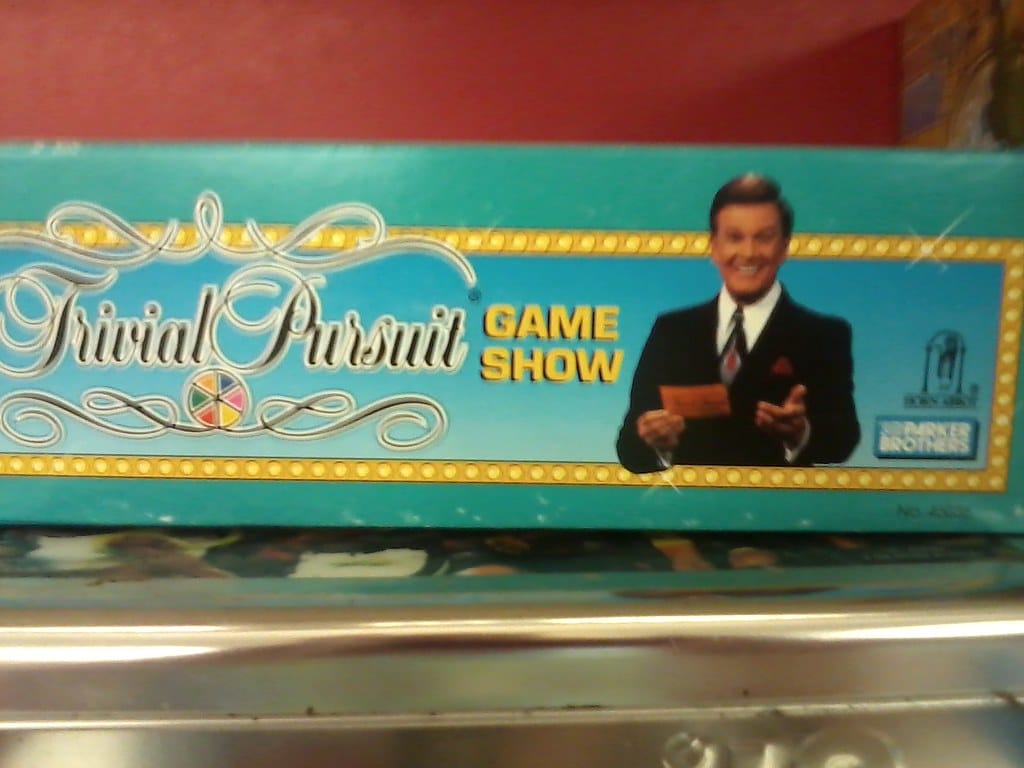
What’s your favorite television game show? Do you think Trivial Pursuit will ever attempt to launch a successful TV game show again? Let us know what you think in the comments! Plus, make sure to check out another trivia game-inspired TV series, Netflix’s Trivia Quest!
Leave a Reply